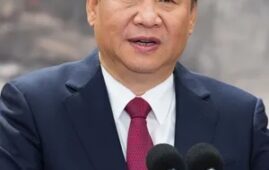By Wang Xiaodong, Zhao Zhanhui, People’s Daily
Many Chinese enterprises recently completed cross-industry transfer to meet the domestic and foreign demands for protective materials, becoming a highlight in China’s work resumption.
According to statistics, tens of thousands of enterprises had joined the production of masks, disinfectant liquids, and protective suits. The output of masks alone expanded fourfold in just a month, exceeding 100 million pieces per day.
What lies behind the 100-million-piece capacity is the quick transfer of manufacturers, which reflects the advantages and potential of the Chinese manufacturing industry.
Xiantao, central China’s Hubei province, is hailed as a “capital of non-woven fabric” for its over 300 such manufacturers.
“The production lines are able to produce 8 tons of melt-blown non-woven fabric each,” said an executive of Xiantao-based CHTC Jiahua Nonwoven Co., Ltd., where only 4 to 5 personnel work on the humming automatic production lines.
The executive Deng Hualian introduced that the company used to produce the tri-layer SMS (spunbond + melt-blown + spunbond) non-woven fabric, but it shifted its production priority to melt-blown non-woven fabric, something used on medical masks, since mid-February to cope with COVID-19.
Now the daily output has reached over 20 tons, which are able to manufacture 20 million pieces of masks. To achieve such performance, the company has invested nearly 8 million yuan.
“Our melt-blown non-woven fabric is able to filter 99 percent of particles and bacteria, and we don’t raise its price,” said Deng.
Another company in the city that produces protective suits Hubei Safe Way Protective Products Co., Ltd. said it has acquired qualification from the European Union and the U.S. and is ready to export its breathable film protective suits to these two destinations.
“We make 500 to 600 suits each day,” said Zhang Wei, an executive of the company.
Hu Qinjiao, a worker of the company, said she had spent the most tiring Spring Festival of her life as the company transferred its production to medical protective suits at the request of the government to meet the demand during the epidemic. As the disease is gradually controlled at home, the company shifted its business to overseas market.
Xinxin Non-woven Fabric Co., Ltd. also readjusted its production. “One of our Spanish customers placed an order of 200,000 items with a unit price of 100 yuan,” said Pan Yuanjing, general manager of the company. Now her mobile phone has become an international hotline that receives frequent calls from the company’s partners.
“The products are shipped to the airports in Wuhan, Shanghai and Changsha in containers after being produced. Some clients use charter flights to transport the products as the pandemic is becoming severer globally,” Pan told People’s Daily.
“Now the city sees a daily foreign trade transaction of 500 million yuan, and the figure is expected to go over 40 percent higher. The orders received by most of the enterprises now can only be delivered till mid-May,” said Zhou Zhihong, secretary of the CPC Xiantao Municipal Committee.
According to Zhou, the city is home to 146 exporting manufacturers, 80 percent of which mainly produce non-woven fabric, and over half of them hold ISO9002 certifications.
Xiantao will make full efforts to construct the city into a national base for emergency supply storage, non-woven fabric production, non-woven fabric raw material supply and non-woven fabric manufacturing, as well as a state center of quality inspection and innovation for non-woven fabric products. It is expected to produce 20 million protective suits, 100 million N95 masks and 2 billion disposable masks.
At present, 90 percent of the workers in the city have returned to work, recovering 90 percent of the capacity. Enterprises’ managers believe that the supply will be further accelerated as the capacity releases.
The complete industrial system enabled the quick production readjustment and the recombination of industrial chains, which indicates China’s unique advantage as the world’s only country that obtains all the industrial categories listed in the United Nations industrial classification.
The sufficient labor force constantly improving its capabilities also contributed to the quick transfer of enterprises. Some enterprises had to design and produce the products at the same time after the business transfer, so both the timely reconstruction of the production lines done by designers and the workers’ quick learning of new production skills played a factor role.
When enhancing international cooperation on combating COVID-19, China is also actively participating in the reconstruction of the global industrial chain. It is forcing the development of more core technologies with market demand, attracting global high-end manufacturers, and accelerating the development of industrial clusters, so as to straighten the global industrial chain.
Workers of Hubei Ourselves Garment Co. Ltd., are producing medical protective suits. The company is able to produce 8,000 suits on a daily basis, and the products will be exported to the U.S., Japan, South Korea and the European Union to help them fight the COVID-19 pandemic. Photo by Wu Yanjun, People’s Daily Online










Leave a Comment